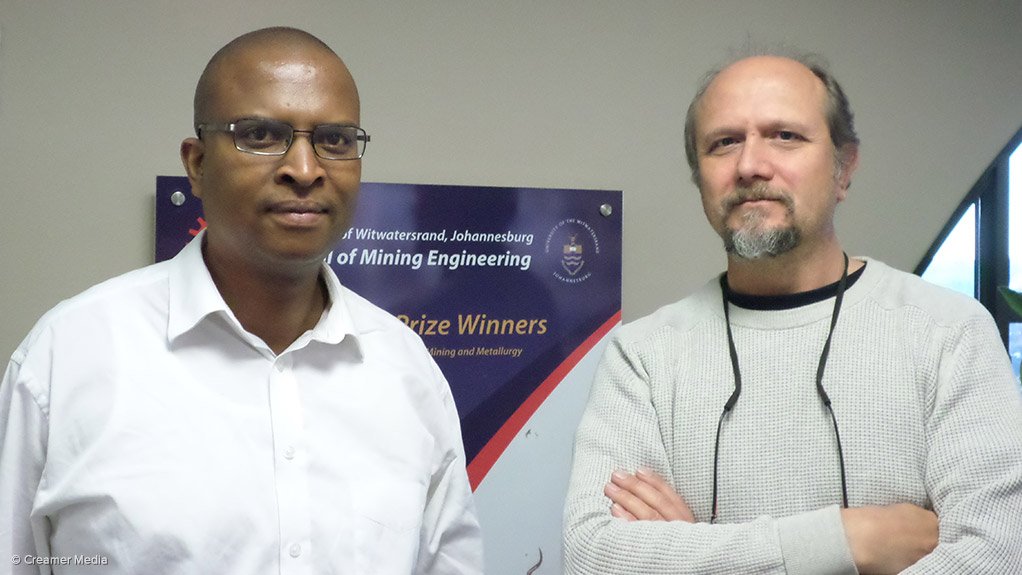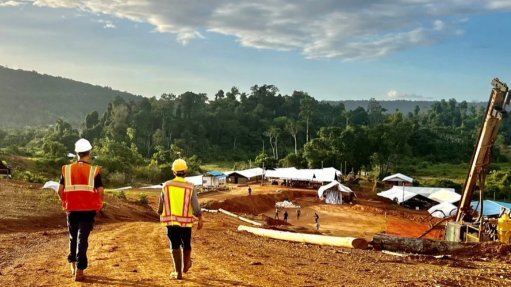Mining-sector status quo not an option for the next 100 years



FUTURE MINE OPERATOR STATION? The future generation will thrive in a job that is a pleasure to work in and one of the prevailing aspects of leisure is to stay connected to the Internet and be up to date with the latest technologies
MOTHUSI MOCHUBELE AND ERHAN ULUDAG New mining realities will include mining deeper orebodies with poorer ore grades, underwater mining projects and meteorite mining with very limited energy sources available
The twenty-first century will be remembered as the century of knowledge, where information became attainable at speeds that were never thought possible. The twenty-second century, however, is likely to become the century of leisure and the mining industry must adapt to these new realities if it is to remain relevant over the next 100 years, says University of the Witwatersrand (Wits) School of Mining Engineering lecturers Erhan Uludag and Mothusi Mochubele.
The pair were speaking to Mining Weekly ahead of their joint presentation at the Mining into the Future conference, which took place from July 1 to 2 in Johannesburg.
The conference was a collaborative partner- ship between Caterpillar, Barloworld Equip-ment (as the Cat Southern African dealer), the Wits School of Mining Engineering and the Wits Centre for Mechanised Mining Systems.
Uludag explains that the future generation will thrive in a job that is a pleasure to work in and one of the prevailing aspects of leisure is to stay connected to the Internet and be up to date with the latest technologies.
Mochubele notes that the ‘toolbox’ of future mining engineers will be radically different to what is used currently. He says that it will include immersive and holographic technologies to enable visualisation, planning and execution of mining projects.
“Mines of the future will likely use machinery, or work robots that have advanced levels of artificial intelligence to ensure they can conceptualise the scope of the task that they are performing, are able to undertake multiple tasks – potentially even simultaneously – and will have modular plug and play software for ease of use,” states Uludag.
Improved Working ConditionsMochubele says companies will have centralised operational hubs near to where their mines are located to improve management control, project execution, logistics coordination, services, facility management, storage and sales.
He adds this will also ensure improved working conditions for mining engineers, thereby improving the profession’s potential to attract the “best and brightest” young minds of future generations.
Mochubele points out that the focus for mining engineers in future must be on ensuring that the mining environment is amenable to use of new and emerging technologies.
“We must also revisit existing mining methods and design criteria to ensure more productive and cost-effective operations,” he states.
Uludag says, in future, mines will have several new realities that they will have to adapt to, including mining deeper orebodies with poorer ore grades, underwater mining projects and meteorite mining, and all this will have to be undertaken with very limited energy sources available.
Moreover, he stresses that all technological development will have to be to the broader benefit of mining-affected communities and workers, owing to the increased emphasis communities place on a mine’s social licence to operate.
“The days of mines having poorly paid mineworkers will just not be an option. Most major mining projects will be highly mechanised if not entirely automated, which will require highly skilled, well-paid operators,” Uludag emphasises, adding that the use of high-tech technologies will ensure a safer work environment at mines.
Mochubele adds that mines of the future will have to be highly energy efficient, resource selective and flexible enough to adapt to the changing needs of the global commodity market.
“Mines will have to be significantly more environment friendly, as local communities are unlikely to tolerate mines that are not.”
Uludag nonetheless notes that “old fashioned” artisanal mining operations will still be in existence, particularly in countries and regions where job opportunities remain scarce.
He also says partially evolved mining operations, using some advanced technologies and some outdated ones will be norm, particularly junior miners that lack the financial resources to implement the newer mining methods and technologies.
However, Uludag avers that new mining techniques developed for challenging resources and operating conditions will gradually gain traction throughout the sector.
He says this will apply particularly to ultra-deep terrestrial operations, very low-grade high-tech processing, deep marine mining operations and extraterrestrial ventures.
Mochubele highlights that in South Africa and other African countries mining equipment will have to be developed to operate at high temperatures, which will reduce the need for highly costly ventilation systems. He says this, in turn, will assist in ensuring more energy efficient systems.
“Companies will have likely adopted the use of high powered fuel cell technologies to reduce and/or eradicate mains power use on mines,” Mochubele adds.
Moreover, he states that key-hole surgery-type selective-remote mining will become standard practice and mines will have developed a “holistic approach” to mining to ensure all stakeholders, including companies, shareholders, mineworkers, trade unions, government and local communities, benefit from mining operations.
“Simply put, the next century of mining operations will have to rapidly adapt to a new world, where the status quo is not an option, and success will only be guaranteed through holistic collaboration and the implementation of radical technological innovation,” Mochubele and Uludag conclude.
Comments
Press Office
Announcements
What's On
Subscribe to improve your user experience...
Option 1 (equivalent of R125 a month):
Receive a weekly copy of Creamer Media's Engineering News & Mining Weekly magazine
(print copy for those in South Africa and e-magazine for those outside of South Africa)
Receive daily email newsletters
Access to full search results
Access archive of magazine back copies
Access to Projects in Progress
Access to ONE Research Report of your choice in PDF format
Option 2 (equivalent of R375 a month):
All benefits from Option 1
PLUS
Access to Creamer Media's Research Channel Africa for ALL Research Reports, in PDF format, on various industrial and mining sectors
including Electricity; Water; Energy Transition; Hydrogen; Roads, Rail and Ports; Coal; Gold; Platinum; Battery Metals; etc.
Already a subscriber?
Forgotten your password?
Receive weekly copy of Creamer Media's Engineering News & Mining Weekly magazine (print copy for those in South Africa and e-magazine for those outside of South Africa)
➕
Recieve daily email newsletters
➕
Access to full search results
➕
Access archive of magazine back copies
➕
Access to Projects in Progress
➕
Access to ONE Research Report of your choice in PDF format
RESEARCH CHANNEL AFRICA
R4500 (equivalent of R375 a month)
SUBSCRIBEAll benefits from Option 1
➕
Access to Creamer Media's Research Channel Africa for ALL Research Reports on various industrial and mining sectors, in PDF format, including on:
Electricity
➕
Water
➕
Energy Transition
➕
Hydrogen
➕
Roads, Rail and Ports
➕
Coal
➕
Gold
➕
Platinum
➕
Battery Metals
➕
etc.
Receive all benefits from Option 1 or Option 2 delivered to numerous people at your company
➕
Multiple User names and Passwords for simultaneous log-ins
➕
Intranet integration access to all in your organisation




















